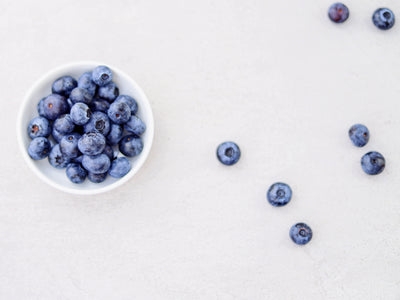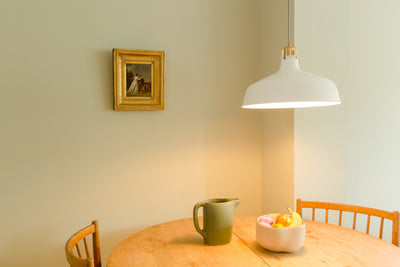Lay the foundations for a healthier spring: 7 tips to power you through

With snowdrops lifting their heads above ground and the murmur of birdsong in the air, the turn of the seasons feels tantalisingly close. And yet the presence of winter and its bitter ravages, from freezing temperatures to long nights, still weighs heavy on our minds and bodies.
Vitamin D reserves depleted, energy levels at their lowest ebb and immune systems battered by bugs, February can feel like a limp, rather than a sprint, to the finish line.
When looking for ways to explain this lack of spring-ready get-up-and-go, it’s also worth remembering that, before Julius Caesar’s Gregorian calendar reform of 46 B.C., the English New Year began on March 25th, not January 1st – making it much better aligned with the blossoming spring and the vitality it brings.
So, how can we overcome the urge to hibernate? What will help us power through this final stretch of winter, and emerge glowing? From the foods to eat to stimulate circulation to the light therapy that will leave you rejuvenated, read on for 7 ways to consciously support your health and lay the foundations for the new season.
1. Drink up: Three teas to manage energy levels throughout the day

Harnessing the blood sugar-balancing, microbiome-supporting powers of apple cider vinegar and the sleep-enhancing qualities of naturally melatonin-rich Morello cherries, these targeted tonics will help you feel your best from sunrise to sunset.
Mellow morning motivator:
Add one tablespoon of apple cider vinegar, one tablespoon of raw honey and a generous squeeze of lemon to a mug of hot water. Drink first thing before breakfast.
Energising afternoon pick-me-up:
Combine your favourite milk, cacao or cocoa powder and one tablespoon of your chosen mushroom powder – we love Lions Mane for improving cognitive function and Cordyceps for an energy boost – for a health-giving and heart-warming hot chocolate.
Evening tranquillity:
Stir one heaped teaspoon of Viridian’s Cherry Night natural bedtime tonic (packed with active ingredients like Morello cherries, magnesium, the amino acid glycine and red date extract) into hot water. Drink one hour before you go to bed.
2. Let there be light…but make sure it’s the right sort

After months of waning daylight and leaden skies, SAD light panels can start to look appealing. But, warns Conscious Spaces founder Tara Williams, stop and think before you hit ‘buy’.
“Many SAD lamps and light panels use high-intensity LED bulbs to emit a harsh, blue-toned light which is designed to mimic bright daylight, but is totally lacking in the beneficial warm, red section of the spectrum which you get with natural sunlight – and which we all need more of at the tail end of winter,” explains Tara. “What you ideally want is something that balances the biological stress the shorter wavelengths in the spectrum can cause, like near-infrared or red light therapy.”
Known as photobiomodulation, red light therapy involves exposing the body to beneficial red or near-infrared light to reduce inflammation, increase mitochondrial function, stimulate healing and improve blood flow and tissue oxygenation. From treating depression and anxiety to boosting immunity and easing muscle and joint pain, research on the benefits of red light therapy is bountiful.
To feel the effects from the comfort of your own home, invest in a red light therapy lamp, like the SaunaSpace Photon. “The Photon warms you gently for a natural, anti-inflammatory energy boost on dark winter days,” says Tara. “It’s also brilliant as an evening lamp, as its red glow relaxes you, ready for a restful night’s sleep.”
Looking for a more affordable hit of red light goodness? Try our BlockBlueLight book lights and soothing sleep lamps.
3. Use breathwork to boost circulation and build body heat

It might seem surprising that something as simple as guiding your breath can affect your body temperature, but breathwork is a brilliant tool for warming yourself up from the inside out and improving blood flow. Great news for those cold end-of-winter nights still to come.
“Ancient pranayama techniques can help create and maintain warmth from within,” explains certified yoga instructor, Lena Schmidt. “Pranayama, one of the eight limbs of yoga, is a collection of breath exercises. Prana is that life force energy within you and Yama is restraint—together Pranayama translates to life force control or control of the breath.”
From Ujjayi Breath, commonly used in Hatha and Vinyasa yoga, to the breath technique pioneered by Dutch extreme athlete Wim Hof, try Lena’s top 5 warming and energising breath practices here. Cold hands and feet? Give the ‘Twisting with Breath’ technique a go to stimulate blood flow to the limbs.
4. Get spicy to relieve coughs and colds

From earthy cinnamon to zingy ginger, nature’s larder is filled with herbs and spices that can enhance energy, stimulate digestion and support health, and have been used in Ayurvedic and Chinese medicine for centuries.
Try adding the following to your diet and feel the natural warming, immune-boosting effects:
- Black pepper. Has antiseptic and antioxidant properties, and can increase blood flow to help relieve muscle and joint stiffness.
- Cayenne. Helps ease coughs, colds and chills. Brings a potent warming sensation.
- Cinnamon. Improves circulation, aids digestion and acts as an antiseptic.
- Ginger. A natural antioxidant and antiseptic that improves circulation.
- Star Anise. Sweet, warming flavour. Helps relieve coughs and colds, rheumatism and digestive issues.
- Cardamom. Can help open up the respiratory passages and produce a warming effect.
- Nutmeg. Boasts antiviral properties and can help with chest congestion.
- Horseradish. Aids digestion of fatty foods, works as a natural antiseptic and decongestant, helping to clear blocked sinuses.
- Garlic. A powerful vasodilator that opens up the blood vessels and improves circulation.
5. Combat the increase in mould that cold, wet weather cultivates

With a run of storms and many rainfall records broken, it’s been an exceptionally wet autumn and winter. Which means mould is on the rise.
Exposure to toxic mould spores has been linked to inflammation, respiratory problems, joint pain, infertility, allergies and more.
And, with more and more people turning off their heating due to higher energy prices and the cost of living crisis, experts are warning that homes could become infested with mould, with a "perfect storm" of cold temperatures, poor ventilation, unheated houses and damp weather.
"Low indoor temperatures and mould are serious threats to physical, mental and social health," said Professor David Ormandy of the University of Warwick.
So, what can you do to stop mould from taking hold in your home? From their anti-mould spray to an ultra-useful laundry additive and air-purifying candles, we recommend trying Micro Balance’s range of 100% natural mould prevention products. Made using botanical ingredients (including citrus seed extracts) that tackle mould and mycotoxins, Micro Balance recipes are highly effective and non-toxic.
Shop Micro Balance products here.
Discover more tips to prevent and treat mould here.
6. Make room in your morning routine for nature

Whether it’s a morning sea swim, a run round your neighbourhood, a dog walk, riding your bike to work – or even simply pushing open your bedroom window and feeling the breeze on your face, getting out in nature first thing will set you up for the rest of the day.
“Rather than reaching for your phone when you wake, let natural light kick start your body clock,” says Tara. “If you can, go out first thing, without contact lenses or glasses on for a moment, and get some sun on your face. How you start your day will help you wind down from any stresses you encounter and drift off to sleep easier.”
7. Join the herd: use more wool

Statistically, February is the cruelest month in terms of freezing temperatures, with snow much more likely to fall between January and March than in December.
When thinking of ways to stay warm without cranking up the thermostat, thoughts naturally turn to insulation.
The problem with many modern insulating materials, whether we’re talking about the kind that gets stuffed into wall cavities and soft furnishings, or the fabrics used to make mass-produced clothing, is that they’re synthetic. This can mean they shed microplastics in the wash, emit harmful toxins over time, or cause you to sweat.
By contrast, wool is 100% natural, non-irritating, flame resistant, humidity-regulating, and boasts impressive sustainability credentials. Recyclable, biodegradable and renewable, wool requires a fraction of the energy it takes to produce man-made alternatives.
Thanks to the crimped nature of wool fibres, which form millions of microscopic warm air-trapping pockets, wool is brilliant at creating a thermal barrier. Once the UK’s most valuable commodity (the stock market even takes its name from livestock), it’s also one of the most time-honoured materials on the planet.
And, unlike synthetic variants, wool won’t off-gas toxins – it can even absorb and neutralise harmful substances such as formaldehyde and nitrogen dioxide.
Try switching to duvets, pillows and mattress toppers stuffed with sheep’s fleece, and use 100% wool blankets, jumpers and socks to stay cosy when the temperature drops. If you’re considering insulating your loft or installing new carpets, look to wool for a healthier natural option.













































